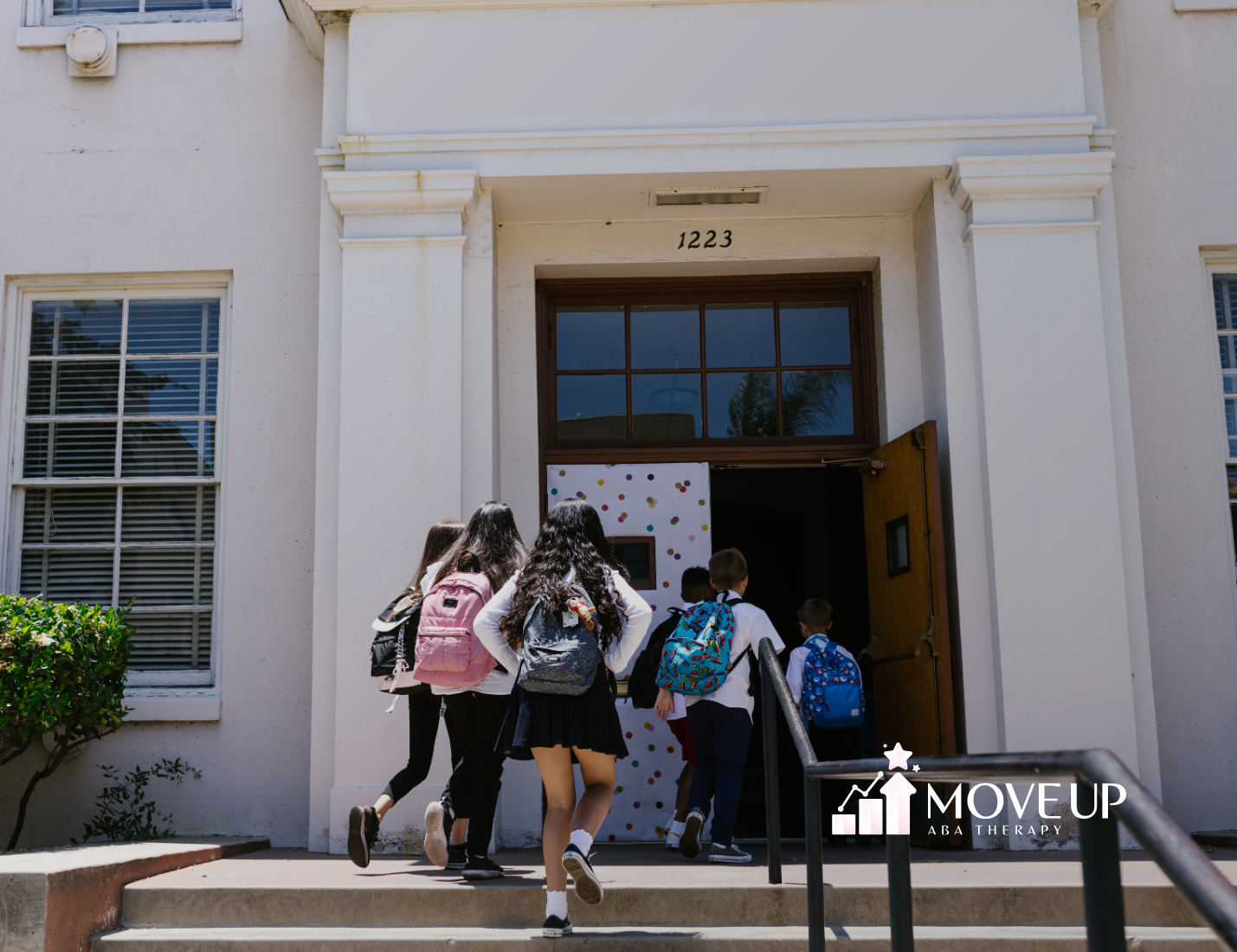Understanding Autism Learning Styles
Tailoring Education for Autism
Creating autism-friendly learning environments requires a deep understanding of the diverse learning styles of students with autism. Tailoring education to meet these unique needs is essential for fostering an inclusive and supportive classroom. According to Autism Speaks, the Autism Speaks School Community Tool Kit provides strategies for success when teaching students with autism, tailored for teachers by subject and all members of the school community.
Students with autism often benefit from visual learning strategies, auditory learning techniques, and kinesthetic learning activities. Tailoring instruction to address these various learning styles ensures that all students can engage with the material effectively. For example, visual schedules, clear language, and positive reinforcement are essential strategies to consider.
| Learning Style | Strategies |
|---|---|
| Visual | Visual schedules, picture cards, diagrams |
| Auditory | Clear verbal instructions, auditory cues, repetition |
| Kinesthetic | Hands-on activities, movement breaks, tactile learning tools |
For more information on specific strategies, visit our articles on visual learning strategies for autism, auditory learning techniques for autism, and kinesthetic learning activities for autism.
Importance of Individualized Approaches
The importance of individualized approaches in creating autism-friendly learning environments cannot be overstated. Each student with autism has unique strengths, challenges, and preferences, making it crucial to tailor educational strategies to meet their specific needs. Traditional classrooms, designed in the early 1900s, often pose challenges for effective learning and can cause frustration and anxiety for those who struggle with sensory demands.
Individualized approaches involve collaboration with special education professionals and families to ensure a consistent approach between home and school. This collaboration enhances the overall effectiveness of interventions for students with autism in the inclusive classroom. By working together, educators can develop personalized learning plans that address the unique needs of each student.
| Approach | Description |
|---|---|
| Individualized Education Plan (IEP) | A customized plan outlining specific goals, accommodations, and strategies for the student |
| Collaboration with Families | Regular communication and involvement of families in the educational process |
| Special Education Support | Access to special education professionals and resources to support the student’s learning |
By understanding and addressing the diverse learning styles of students with autism, educators can create supportive and inclusive learning environments that promote success for all students.
Creating Autism-Friendly Learning Environments
Strategies for Classroom Setup
Creating an autism-friendly learning environment involves thoughtful classroom setup strategies that cater to the unique needs of autistic students. A well-organized and predictable classroom can significantly enhance their learning experience.
- Structured Layout: Arrange the classroom in a way that clearly defines different areas for specific activities. This helps students understand what is expected in each area and reduces anxiety.
- Visual Supports: Use visual schedules, labels, and signs to provide clear instructions and expectations. Visual aids can be particularly helpful for students who benefit from visual learning strategies for autism.
- Minimize Clutter: Keep the classroom environment tidy and free from unnecessary distractions. A clutter-free space can help students focus better.
- Flexible Seating: Offer a variety of seating options, such as bean bags, standing desks, and traditional chairs, to accommodate different sensory needs and preferences.
Sensory Considerations in Education
Sensory issues can significantly impact the ability of autistic students to concentrate and learn effectively. Implementing sensory-friendly strategies can create a more inclusive and supportive classroom environment.
- Sensory-Friendly Spaces: Designate quiet zones or sensory corners where students can retreat to when feeling overwhelmed. These areas should be free from loud noises and bright lights.
- Sensory Tools: Provide sensory tools such as noise-canceling headphones, fidget toys, and weighted blankets to help students manage sensory overload.
- Lighting and Sound: Use soft lighting and reduce background noise to create a calming atmosphere. Avoid fluorescent lights, which can be harsh and overstimulating.
- Hands-On Materials: Incorporate tactile and hands-on materials into lessons to engage students with different sensory preferences.
Supporting Emotional Regulation
Emotional regulation is crucial for the success of autistic students. Providing strategies and tools to help them manage their emotions can lead to a more positive learning experience.
- Zones of Regulation: Implement the Zones of Regulation curriculum, which helps students identify their emotions and provides strategies for managing them.
- Calm-Down Techniques: Teach and practice calm-down techniques such as deep breathing, counting, or using a stress ball. These techniques can help students regain control during moments of distress.
- Consistent Routines: Establish and maintain consistent routines to provide a sense of security and predictability. This can reduce anxiety and help students feel more in control.
- Positive Reinforcement: Use positive reinforcement to encourage desired behaviors and celebrate successes. This can boost students’ confidence and motivation.
By implementing these strategies, educators can create autism-friendly learning environments that support the diverse needs of autistic students.
Effective Teaching Strategies for Autism
Creating autism-friendly learning environments involves implementing effective teaching strategies tailored to the unique needs of students with Autism Spectrum Disorder (ASD). This section explores three key strategies: Applied Behavior Analysis (ABA), enhancing reading comprehension, and the benefits of inclusive education.
Applied Behavior Analysis (ABA)
Applied Behavior Analysis (ABA) is an evidence-based methodology that uses positive reinforcement to encourage desired behaviors and skills in children with ASD. ABA therapy involves using rewards and incentives to reinforce positive behaviors, making it a highly effective approach for teaching students with autism.
Key components of ABA include:
- Positive Reinforcement: Rewarding desired behaviors to increase their occurrence.
- Token Economies: Using tokens as rewards that can be exchanged for preferred items or activities.
- Data Collection: Monitoring and recording behaviors to track progress and adjust interventions as needed.
ABA has been proven effective for long-term development, helping children with ASD improve their social, communication, and academic skills.
Enhancing Reading Comprehension
Reading difficulties are common in children with ASD, making it essential for educators to implement strategies that enhance reading comprehension. Tailoring instruction to address various learning styles ensures that all students can engage with the material effectively.
Effective strategies for enhancing reading comprehension include:
- Visual Supports: Using pictures, diagrams, and visual schedules to aid understanding.
- Clear Language: Simplifying instructions and using concrete language to reduce confusion.
- Repetition and Practice: Providing multiple opportunities for practice to reinforce learning.
Benefits of Inclusive Education
Inclusive education, where students with autism learn alongside their non-autistic peers, offers significant benefits for all students involved. This approach fosters social skills, understanding, and acceptance among students while providing a supportive learning environment.
Benefits of inclusive education include:
- Social Interaction: Encouraging positive interactions and friendships between students with and without autism.
- Diverse Learning: Exposing all students to diverse perspectives and learning styles.
- Supportive Environment: Creating a classroom culture of acceptance and support.
Inclusive education also helps students with autism develop essential life skills, such as communication and collaboration, which are crucial for their overall development.
By implementing these effective teaching strategies, educators can create autism-friendly learning environments that support the success of all students.
Collaboration for Success
Creating autism-friendly learning environments requires a collaborative approach involving special education professionals and families. This section explores the importance of working together to ensure the success of students with autism.
Working with Special Education Professionals
Collaboration with special education professionals is crucial for developing effective strategies and interventions tailored to the unique needs of students with autism. These professionals include special education teachers, occupational therapists, speech-language pathologists, and behavior analysts. Their expertise helps create a consistent approach between home and school, enhancing the overall effectiveness of interventions.
Occupational therapy practitioners play a significant role in maintaining sensory-friendly environments in classrooms. They provide direct instruction and collaborate with teachers to support students with sensory processing differences. This collaboration ensures that evidence-based practices are implemented and intervention fidelity is maintained.
Developing individualized education plans (IEPs) and behavior intervention plans (BIPs) tailored to the child’s unique needs is essential. Working closely with teachers, therapists, and other professionals ensures consistency and support across different environments.
Involving Families in Education
Involving families in the educational process is vital for creating a supportive and understanding environment for students with autism. Families provide valuable insights into their child’s strengths, preferences, and challenges, which can inform the development of effective strategies and interventions.
Collaboration with teachers, educational assistants, school-based teams, and community partners helps families feel understood and supported. The acronym TEAM (Together Everyone Achieves More) emphasizes the importance of working together for positive outcomes,
Regular communication between families and educators is essential for ensuring consistency and addressing any concerns that may arise. This can be achieved through parent-teacher meetings, progress reports, and informal check-ins. Building strong partnerships with parents fosters a collaborative approach to education, benefiting the students and enhancing their learning experience.
Tools for Autism-Friendly Environments
Creating an autism-friendly learning environment involves using various tools and strategies to support the unique needs of students with autism. These tools can help enhance learning, reduce sensory overload, and improve communication.
Visual Supports and Schedules
Visual supports and schedules are essential tools for creating autism-friendly learning environments. They provide clear and consistent information, helping students understand and anticipate daily routines and activities. Visual supports can include:
- Picture Schedules: These help students follow daily routines and transitions.
- Task Cards: These break down complex tasks into manageable steps.
- Social Stories: These explain social situations and appropriate responses.
Using visual supports can reduce anxiety and increase independence in students with autism.
Sensory-Friendly Spaces
Creating sensory-friendly spaces is crucial for supporting students with sensory processing differences. These spaces help manage sensory overload and maintain focus. Effective strategies include:
- Quiet Zones: Areas free from loud noises and bright lights.
- Noise-Canceling Headphones: These help reduce auditory distractions.
- Fidget Toys and Weighted Blankets: These provide tactile input and help with self-regulation.
| Sensory Tool | Purpose |
|---|---|
| Noise-Canceling Headphones | Reduce auditory distractions |
| Fidget Toys | Provide tactile input |
| Weighted Blankets | Help with self-regulation |
Communication Aids
Communication aids are vital for supporting students with autism who may have difficulties with verbal communication. These tools can include:
- Augmentative and Alternative Communication (AAC) Systems: These support communication development through devices and apps.
- Picture Exchange Communication System (PECS): This allows students to communicate using pictures.
- Speech-Generating Devices: These provide a voice for non-verbal students.
Collaboration with speech-language pathologists and occupational therapists can enhance the effectiveness of these communication aids.
By incorporating these tools into the learning environment, educators can create a supportive and inclusive space for students with autism.
Advocacy and Communication
Empowering Autistic Students
Empowering autistic students involves providing them with autonomy and opportunities to make their own choices. It is crucial for students’ voices to be heard and respected in the educational environment. This can be achieved through:
- Choice-making opportunities: Allowing students to select activities or tasks can enhance their engagement and sense of control.
- Student-led goals: Encouraging students to set their own learning goals fosters independence and motivation.
- Inclusive decision-making: Involving students in decisions about their education and accommodations ensures their needs and preferences are considered.
Building Partnerships with Parents
Parents play a crucial role in the education of autistic students. Building an open and trusting relationship with parents is foundational for effective collaboration. Understanding parents’ feelings and experiences, such as past negative encounters or always being in an advocacy role, is essential. Key strategies include:
- Regular communication: Keeping parents informed about their child’s progress and any concerns.
- Parent-teacher meetings: Scheduling regular meetings to discuss the student’s development and address any issues.
- Collaborative planning: Involving parents in the development of Individualized Education Plans (IEPs) and other educational strategies.
Effective Home-School Communication
Establishing effective home-school communication is vital for parents of autistic students, as they may not be able to talk about their day at school. Sharing positive information with parents can significantly impact the quality of family life. Effective communication strategies include:
- Daily communication logs: Using notebooks or digital platforms to share daily updates on the student’s activities and behavior.
- Positive feedback: Regularly informing parents about their child’s achievements and positive behaviors.
- Direct reporting: Schools should report significant behavioral incidents directly to parents rather than through communication books.
By focusing on advocacy and communication, educators can create autism-friendly learning environments that support the success of autistic students.
Conclusion
In conclusion, creating autism-friendly learning environments means recognizing and supporting the unique learning styles, sensory needs, and emotional development of each student. Through individualized strategies, inclusive education, and strong collaboration with families and professionals, educators can empower students with autism to thrive.
At Move Up ABA, we specialize in providing personalized ABA therapy that helps children build essential skills in a supportive, structured environment.
Sources:
- https://www.autismspeaks.org/tool-kit-excerpt/autism-classroom-strategies
- https://autismspectrumnews.org/supporting-sensory-diversity-building-inclusive-classrooms/
- http://www.autism-help.org/behavior-positive-reinforcement-autism.htm
- https://www.nu.edu/blog/4-teaching-strategies-for-students-with-autism/
- https://autismawarenesscentre.com/collaboration-in-education-working-together-for-positive-outcomes/







